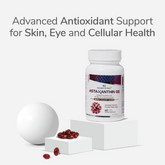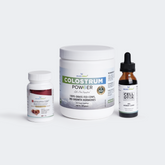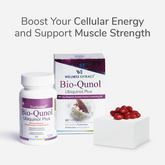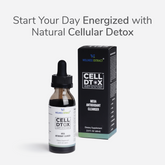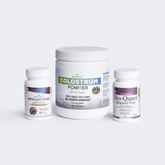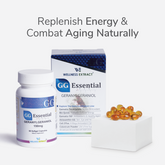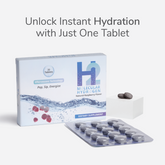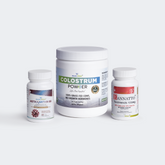Estimated Reading Time: 8 minutes
|Athletics is an intense and demanding world where elite performance and quick recovery are always at stake. Astaxanthin for athletes has emerged as a beacon of hope in this pursuit; it is not simply another supplement but rather an innovative revolution within athletics itself.
Every millisecond counts when muscle contraction counts. Astaxanthin gives sprinters and cyclists a natural, safe way to boost performance while speeding recovery.
This blog explores the numerous advantages of Astaxanthin for athletes, highlighting its beneficial properties such as improving sports performance, endurance, muscle recovery, and injury healing.
Astaxanthin: A Natural Powerhouse for Athletic Performance
Astaxanthin, a naturally occurring carotenoid found in many algae, yeasts, trout, krill shrimp, and other aquatic creatures, is most well known as being responsible for salmon's pink-red hue. Still, its significance goes well beyond just that.
Astaxanthin's antioxidant properties play an essential role for athletes as it combats oxidative stress and inflammation caused by high-intensity physical activities - common issues when pushing yourself beyond limits that increase oxygen consumption, leading to fatigue, soreness, and reduced performance.
Enhancing Endurance and Minimizing Fatigue with Astaxanthin
Attaining improved endurance and reduced fatigue are constant goals for athletes, and Astaxanthin plays a critical role in reaching this objective. This natural supplement can increase our bodies' endurance capacity, making it particularly helpful in endurance sports like long-distance running, cycling, swimming, and triathlon.
1. Astaxanthin and Endurance Sports
Endurance sports require athletes to sustain prolonged physical activity without fatigue, exhaustion, or suffering muscle cramps. The best Astaxanthin for athletes assists them by improving energy usage in muscles and decreasing accumulations of lactic acid that can contribute to muscle fatigue.
This allows athletes to extend physical output without experiencing fatigue or exhaustion during performance.
2. Astaxanthin and Muscle Fatigue and Energy Levels
Astaxanthin's powerful antioxidant properties also play a critical role in combating oxidative stress, an all too familiar side effect of long-term physical exertion. By neutralizing free radicals produced during vigorous physical exertion, Astaxanthin helps protect muscle cells from damage caused by free radicals generated during exertion.
It helps to lessen fatigue sensations while protecting mitochondria. The powerhouses of cells manage energy production so they may function efficiently to produce energy.
3. Enhancing Athletic Resilience and Recovery
Anti-inflammatory effects provided by Astaxanthin play an integral part in helping athletes overcome muscle inflammation and soreness post-exercise, aiding faster recovery and increasing resilience against subsequent workout demands.
Athletes can return to training sooner with greater vigor, enhancing overall performance and endurance.
4. Enhancing Cardiovascular Performance
Astaxanthin provides cardiovascular benefits as well. Studies suggest that by increasing blood flow & reducing oxidative stress levels, Astaxanthin helps increase oxygen delivery to muscles.[1]
This is particularly advantageous in endurance sports, where efficient oxygen utilization is essential to performance.
Athletes using Astaxanthin may experience improved cardiovascular endurance, allowing them to perform at higher intensities over longer durations.
Astaxanthin for Cyclists and Runners: A Natural Energy Boost for Endurance Athletes
Cyclists and runners are endurance athletes who continuously push themselves, searching for ways to enhance performance and hasten recovery. Astaxanthin can be essential in this pursuit by improving blood flow, reducing oxidative stress levels, and aiding performance.
Improved blood circulation ensures more oxygen and nutrients reach muscle tissues for longer-distance events. At the same time, Astaxanthin's antioxidant properties help mitigate muscle fatigue that cyclists and runners commonly experience during extended activities.
Specifically, Astaxanthin for runners can be a game-changer, enhancing their endurance and recovery and pushing them beyond their usual limits with reduced post-exercise soreness.
1. Enhancing Recovery Post-Exercise
Recovery after exercise is an integral component of endurance athletes' routines. Astaxanthin's powder to reduce oxidative stress and inflammation is pivotal.
After intense training sessions or races, cyclists and runners often face delayed onset muscle soreness (DOMS), where Astaxanthin, especially beneficial for runners, can play a crucial role. By incorporating Astaxanthin into their regimen, athletes can experience significant relief from DOMS.
This quicker recovery means that athletes, including runners, can return to training sooner, maintaining an increased performance level over time.
The specific benefits of Astaxanthin for runners, in addressing DOMS and enhancing recovery, make it a valuable supplement in any runner's training program.
2. Astaxanthin Can Boost Stamina and Endurance
One of the greatest advantages of Astaxanthin for endurance athletes is its capacity to increase stamina and endurance. By improving energy utilization and decreasing muscle fatigue rates, Astaxanthin helps cyclists and runners push harder during races or training sessions that rely heavily on stamina for success.
This increase can prove vital during long races where every effort counts toward the success of their endeavors.
Comparing Astaxanthin with Creatine and Beetroot
As athletic supplements go, Astaxanthin, creatine, and beetroot each provide specific advantages tailored to different aspects of performance and recovery.
Acknowledging their distinct roles and effects will enable athletes to make informed decisions when supplementing their training regimen with these substances.
Astaxanthin: Antioxidant Powerhouse
Astaxanthin has earned itself an esteemed place in athletic circles due to its powerful antioxidant properties. Unlike many supplements, Astaxanthin's primary focus is mitigating oxidative stress and inflammation - two significant challenges facing those engaging in prolonged or intense physical activities.
By mitigating these challenges, Astaxanthin contributes to enhanced endurance, faster recovery time, and overall muscle health improvements, making it particularly helpful for long-distance runners or cyclists needing peak performance over prolonged periods.
Creatine: the Muscle and Strength Builder
Creatine, an iconic supplement in sports nutrition, operates on only one end of the spectrum. It's revered for increasing muscle mass and providing short-term, high-intensity athletic performance increases by increasing body production of ATP (adenosine triphosphate).
Creatine provides this immediate energy boost, which is especially useful in short-burst sports like sprinting or weightlifting that require short bursts of speed or strength. However, it does not directly address oxidative stress or inflammation issues as Astaxanthin does.
Beetroots: Enhancing Oxygen Absorption
Beetroot, another popular supplement, is revered for its high nitrate content, which the human body converts into nitric oxide for better blood flow and oxygen delivery to muscles. This process is especially advantageous to athletes seeking increased endurance with decreased oxygen consumption during exercise.
While beetroot benefits cardiovascular performance and efficiency, Astaxanthin for athletes offers direct anti-inflammatory and antioxidant protection that's hard to beat.
Astaxanthin, Creatine, and Beetroot: Complementary Benefits
Compare Astaxanthin, creatine, and beetroot supplements side-by-side, and it becomes clear that each serves its specific function. Astaxanthin excels at combating oxidative stress and inflammation while improving endurance and recovery.
Creatine stands out for increasing muscle mass and power output during short-duration, high-intensity activities. Beetroot has proven its worth in increasing oxygen utilization, making it perfect for endurance sports where efficient oxygen utilization is crucial.
Selecting an Appropriate Astaxanthin Formulation for Athletes
Several key facets must be considered when selecting an Astaxanthin supplement suitable for athletes.
Selecting one doesn't simply involve choosing one brand - rather, this decision needs to consider the source, Astaxanthin dosage for athletes, and quality aspects.
Understanding the Source
Determining where Astaxanthin comes from is significant, with natural Astaxanthin derived from Haematococcus pluvialis microalgae being considered the most effective form.
This form is biologically identical to wild salmon Astaxanthin and more easily absorbed by the body than synthetic versions. Athletes should look for supplements that specify their natural source to access this bioavailable form of Astaxanthin.
Evaluating Quality and Purity
Quality and purity should always be top priorities when selecting a supplement, particularly Astaxanthin. Athletes should seek certifications or lab testing results confirming its purity before purchasing their Astaxanthin supplement.
Furthermore, extraction methods such as Supercritical CO2 extraction ensure high-grade extraction.
Dosage Is Key
Astaxanthin dosage for athletes is another key consideration. While the general recommended dosage for athletes ranges between 4-12 mg daily, individual needs can differ based on training intensity and goals.
Therefore, selecting a product with flexible dosing capabilities allows athletes to adapt according to their own needs or the advice of healthcare providers.
Examining Formulations
Formulations of Astaxanthin supplements can also be of paramount importance. Certain products combine Astaxanthin with other synergistic ingredients like omega-3 fatty acids or vitamin E that may enhance its effects.
Athletes should ensure these combinations are supported by scientific evidence and not include fillers or allergens that could compromise performance.
Assessing Brand Reputation
At the core of it all lies brand reputation and transparency, which can provide key insights into product reliability and effectiveness. Reputable brands tend to be more reliable, investing more heavily in clinical studies and quality control programs.
Their manufacturing processes and quality controls are transparent, as are their sourcing, manufacturing processes, and testing procedures. Reading reviews about their history or understanding their commitment to athletes' health can give great insights into a product's reliability and effectiveness.
Conclusion
Astaxanthin is an impressive natural and effective supplement for athletes looking for natural ways to maximize performance and recovery. Astaxanthin for cyclists has proven to be a game-changing supplement if included in a daily regimen.
Utilize this natural powerhouse to increase endurance, accelerate recovery, and reach new heights in your athletic journey. After all, success lies in hard training sessions and in making smart health-related choices.
So, why not give the best Astaxanthin for athletes a try and witness its difference for yourself?
Disclaimer: These statements have not been assessed by the FDA. The information contained within this page is for educational purposes only. It is not intended to replace the advice or attention of health care professionals.
References

















